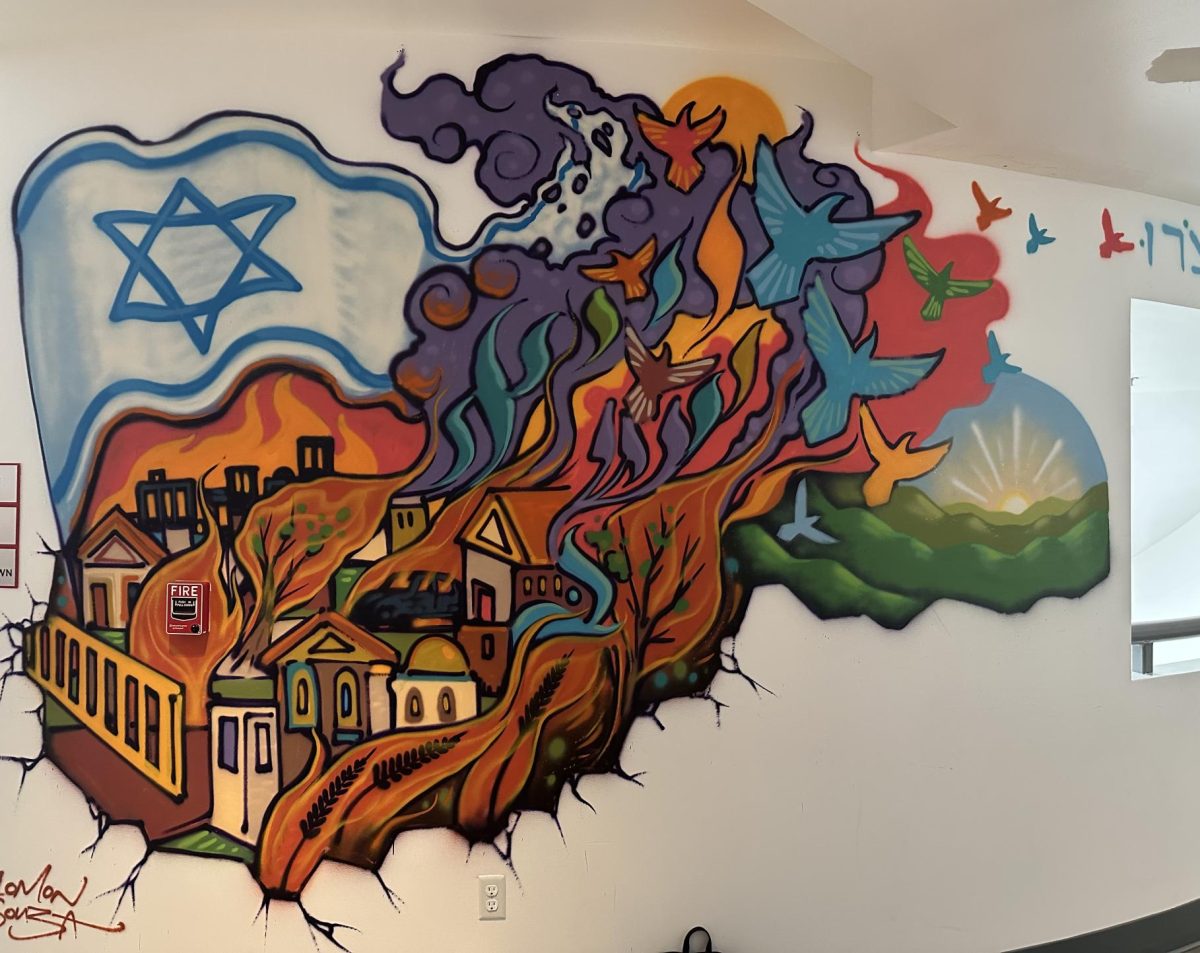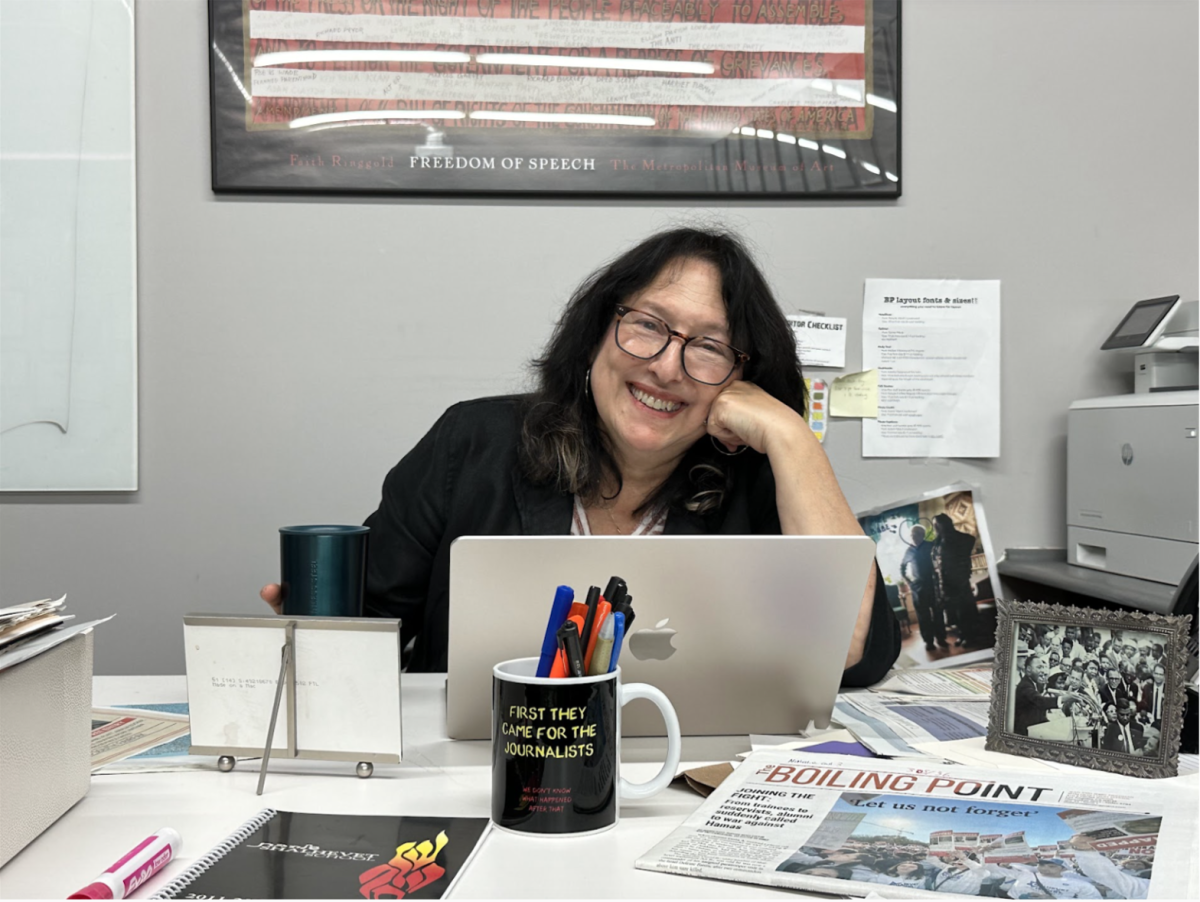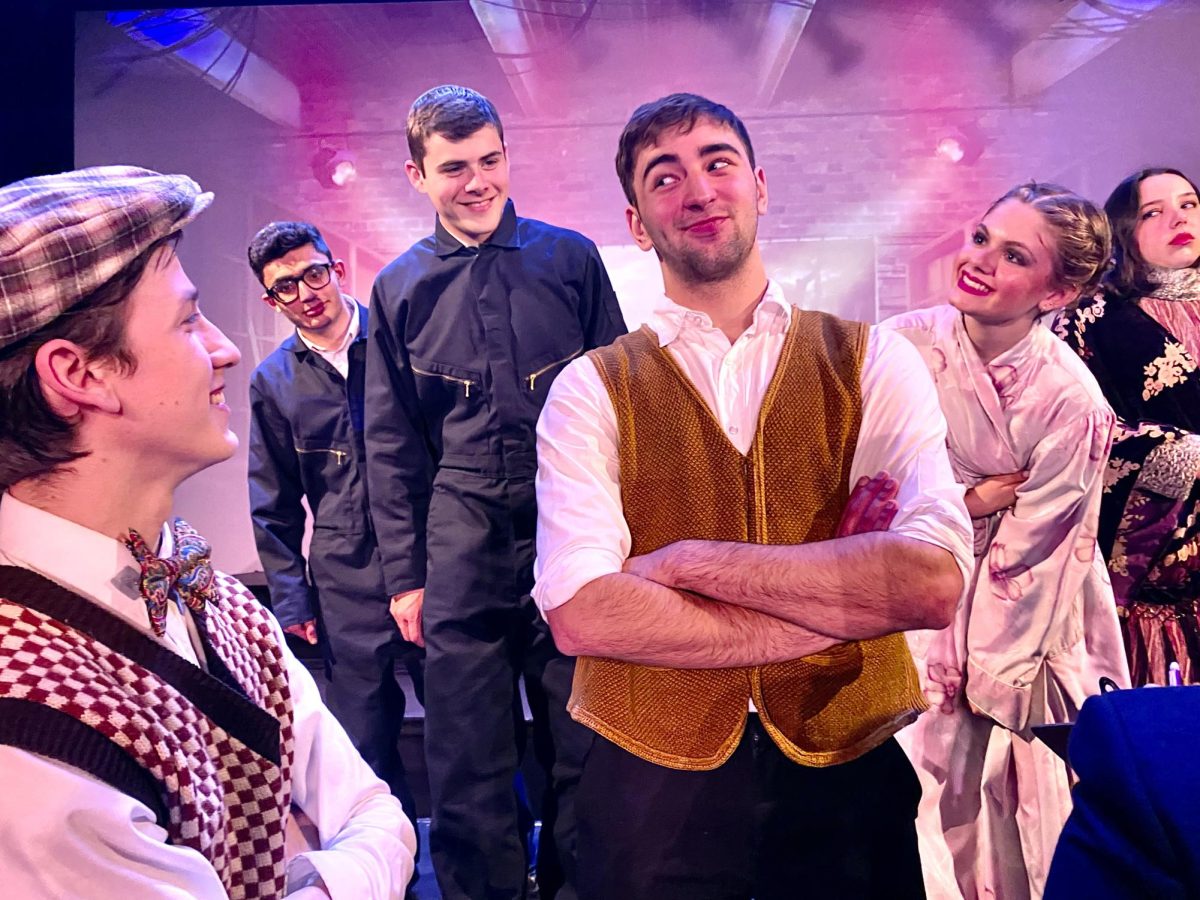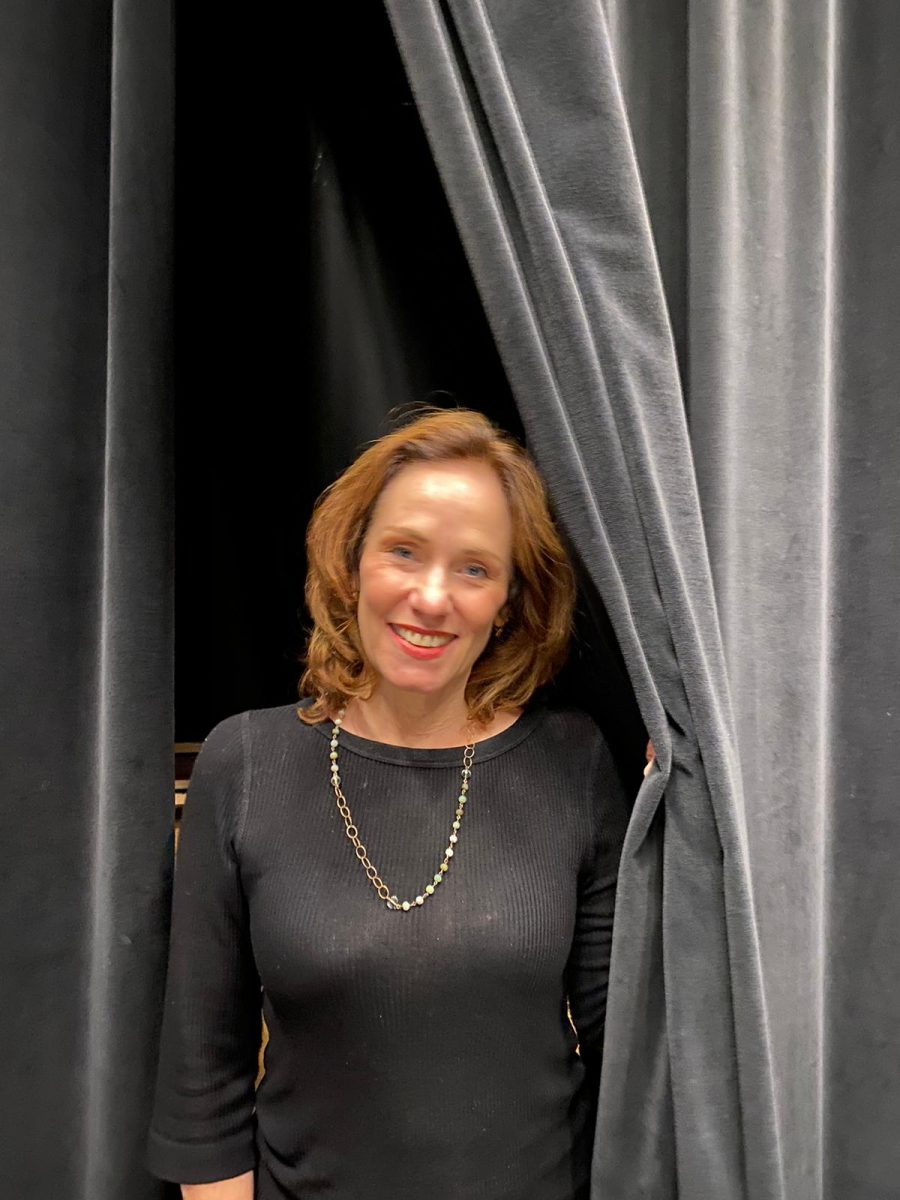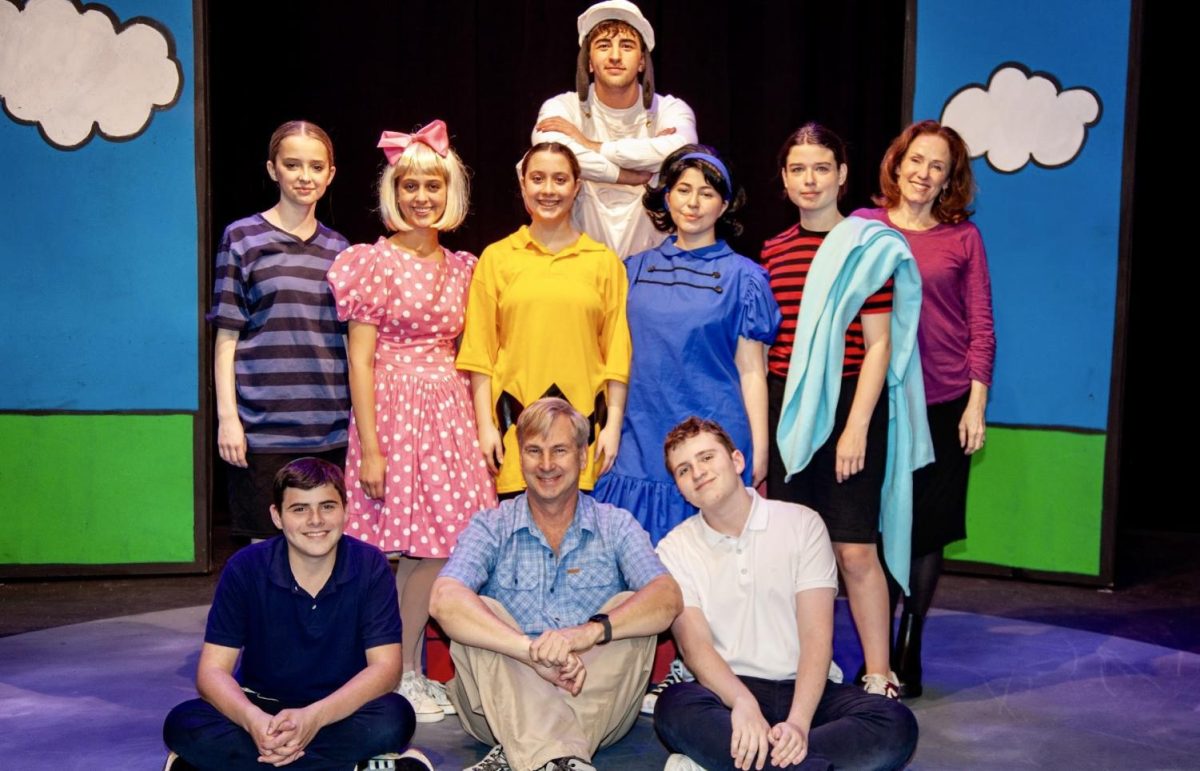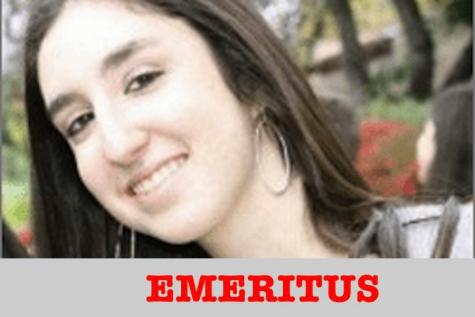“It’s important to capture the moment,” says Eddie Friedman, who photographed Shalhevet’s annual Poland-Israel trips from 2002-2009.
“You blend, fall back, let the moment be, let the people experience,” he continued. “There’s contemplation, there’s indifference, there’s sadness. I don’t try to control the emotions. They are there already.”
In a moving, 48-piece exhibit that runs through April 1 at the Los Angeles Museum of the Holocaust, Mr. Friedman recreates the strong emotions accompanying the last seven years of Shalhevet seniors’ end-of-year trip. Located at 6435 Wilshire Blvd., the museum is on the ground floor of the ORT Technical Institute building, next door to the Jewish Federation.
The opening Jan. 24 was attended by around 100 people, including Shalhevet alumni who spoke and seniors who will be going on the trip this year.
“It was a wake-up call,” said senior Meital Cafri, who viewed the pictures at the event and plans to go on this year’s trip. “It’s real. It’s the truth.”
Every May for their two-week senior trip, Shalhevet’s seniors visit Holocaust sites in Poland, including the Dachau and Auschwitz concentration camps, mass graves sites and memorials, accompanied by chaperones and Holocaust survivors. Then, following the path of so many, they leave Europe for Israel and celebrate the Jewish State.
As director of student affairs at Shalhevet from 2002 through 2007, Mr. Friedman organized and staffed the excursions. He then moved to Israel where he now lives in Efrat, and continued coordinating the Poland-Israel trips from there, flying back to Los Angeles to depart for Europe with the class. He gathered a team of “talented adults” including psychologists, doctors and educators to accompany the students, and helped raise money through donations and grants.
Mr. Friedman always carries a camera on his belt and calls himself an “informal photographer.” The child of Holocaust survivors, he never took any college photography courses but photography became his passion when he discovered that his family survived the war with few pictures.
“I grew up with very few photos from my family’s past,” he said in a phone interview with the Boiling Point from his twin brother’s home in Los Angeles. “I had a brother and sister who died in the Holocaust.”
Photography became a way for him to connect not only to his family’s experiences but to the world at large. He’s taken pictures in nature, prayer and ritual, at the Western Wall, and in countries including the former Soviet Union, Brazil, China and Lebanon.
“Photography fits into life, capturing memories, moments, feelings, history, documentation and facts—hopefully in an artistic way,” Mr. Friedman said. “I’m always looking for emotions to capture.”
Mr. Friedman first visited Holocaust sites in Poland with Shalhevet.
“My first time experiencing it was with the staff and with students,” Mr. Friedman recalled. “It wasn’t just a trip; it’s never just a trip. It’s a journey—absolutely, passionately with the camera.”
And he experienced it through the eyes of high school seniors.
“I saw the great closeness to one another and a lot of support,” he said. “As a class, it’s a wonderful experience. There’s an inter-activeness among the students that’s emotionally laced to when they are in a place filled with evil.”
“You’re in nature, and it’s beautiful,” Mr. Friedman said. “[But] it’s not a picnic. You’re not going through a walk in the woods. You see a photograph that depicts the shapes of the trees and the green setting with the flowers all over them—a place like that shouldn’t be beautiful.”
The photographs in the museum’s exhibit, titled “To Learn, To Remember, To Hope,” illustrate both themes and “contradictions,” as Mr. Friedman calls them. Many of his pictures use nature to show tensions. Moss coated, stone memorial markers sit among green hedges and trees in one picture, tainting the serene atmosphere with tragedy. In another, a girl wearing a cape-like Israeli flag stands still in a grassy clearing with small yellow flowers, among Hebrew-inscribed memorial markers.
“One of my favorite pictures is the one with the electrical wires and stone pillars,” he said. “But the background is these beautiful, warm, yellow flowers you see. I’m always looking to do contradictions in photography.”
Some of the exhibit’s photographs feature the very green Lopuchowo forest in Poland, where the mass graves of the Tykocin Jews reside. Students carrying Israeli flags walk together down a dirt road, encompassed by pine trees. Although only their backs show, the photograph still sends a powerful message.
“When you walk into that forest, certainly if you’re with a camera, you have an increased sense of sensitivity of what is there to be captured,” Mr. Friedman explained. “If you’re going to fall back, then they [the students] forget that you’re there, and you’ll go about capturing their impact. I…quietly, unobtrusively, walk around and capture.”
With a subject as emotionally delicate as the Holocaust, Mr. Friedman tried to blend in as well as he could when photographing. He admitted however, that sometimes, disturbance was inevitable.
“Photography is a whole in-your-face kind of thing,” he said. “If it wasn’t good, you weren’t close enough. You have to be there in the moment, in their face. That is something that can be disruptive at times.”
However, Shalhevet graduate Daniel Rabin ’07 said that he hadn’t been aware of Mr. Friedman taking photos, and that he was grateful that he had them now.
“When you are there you are in such a different mindset that you don’t really know what’s going on,” Daniel said. “It definitely did not bother me or affect my emotions to have him there. In fact, I definitely appreciate it because it’s hard to remember all the details from the trip, but having Eddie photograph us keeps the trip alive.”
“You get so focused and emotionally involved in what you’re experiencing that you forget that someone is documenting it,” agreed classmate graduate Penina Smith.
Art teacher Roen Salem chaperoned the 2005 and 2009 trips and commented on Mr. Friedman’s camera techniques and the emotions they help convey.
“Eddie is very talented, I’m a big fan,” Ms. Salem said. “[His pictures are] very well crafted; good composition, unusual standpoint. From the artistic standpoints — amazing. Body language is very indicative of where they were — hunched figured people hugging each other — really emotional.”
Mr. Friedman, who said he may have gotten only a single decent shot for each 30 or 40 he took, always carried one camera for color pictures and one for black-and-white.
The exhibit’s black-and-white pictures feature mostly still-life scenes from within a concentration camp or emphasize an emotion or mood. In one picture showing the entrance to the Birkenau concentration camp, a long triangle of railroad tracks emerge from the bottom center of the photo and disappear at the photo’s center focal point. The railroad cuts the space in front of the stone building almost neatly in half, a symmetry that evokes a chill.
Another black and white picture focuses on a student’s slender hand, long fingers extended, resting on a barbed-wired fence, while the triangular corner of a talit, a third of the way into the photograph appears a bit past the teenager’s sleeve. Blurred trees and poles behind the fence add another dimension.
Other photographs in the exhibit include the Magen David on the entrance gate to the Lublin cemetery, the famous arbeit macht frei (“work sets you free”) phrase on Auschwitz’s entrance gate, and students and survivors at the Wolomin Memorial. At the Treblinka extermination camp, someone—maybe a student, draped a jacket over a memorial stone.
During the Israel part of the trip, Mr. Friedman photographed a street parade and Shalhevet students with flags and school logoed shirts dancing at the Kotel and in the streets on Yom Yerushalayim.
“When you come to Israel, you have to take a deep breath and see continuation of the history—a marvelous thing to also capture,” Mr. Friedman described. “It’s an emotion.”
In 2007, famed director Steven Spielberg decided to make a documentary of the journey, and loaned 10 new cameras to the traveling seniors. The next year, Spielberg sent three professional film makers to get more feedback from the students. In two years, Spielberg created an accounting of the experience, said Mr. Friedman.
“I think we should all have a medium we should be able to express ourselves in,” Mr. Friedman said. “For me it’s the camera. The camera has a way of bearing witness to the good and bad.”
He said that after the excursion, the students who went would try to describe their experiences to the ones who didn’t go. His goal was to connect those students to the Poland-Israel journey through his photos.
Alumni Stephanie Aziz ‘08 and Matt Sherer ‘09 spoke, and their words, along with statements from head of school Rabbi Weinbach and Renee Firestone, a survivor, are on the walls beside different photographs throughout the exhibit.
“I thought that the pictures represented how the past and present collide,” Stephanie later commented. “The pictures captured the emotions of students as they gained a greater understanding of how their lives are shaped by the past.”
Current Shalhevet students also attended the opening.
“The feel of the room was powerful, heavy,” said senior Trevor Brandt-Sarif, who plans to go on this year’s Poland-Israel trip. He agreed that pictures could help substitute for the experience. “If you can’t see it with your own eyes, it’s the next best thing.”
“Eddie really captured the emotion of people when they saw the campus,” said his classmate Meirav Cafri. “You hear the kids talk but you don’t see really how sad they were till you see the pictures.”
Mark Rothman, executive director of the museum and father of current students Saul and Eitan Rothman, said that when he first saw Mr. Friedman’s pictures, he had immediately liked the idea for an exhibit and asked Rabbi Weinbach to co-sponsor.
“Eddie approached me and showed me a small album of his exhibit and talked about the work he had done photographing it and the cooperation with Shalhevet,” Mr. Rothman said. “It became apparent that the event reached out to two communities — Shalhevet and the museum.”
“[The exhibit] captures a modern commitment to the Holocaust,” he said.
Mr. Rothman noted that by coincidence, a delegation from Zambia that had been at the opening.
“People were very moved by the photographs; the program really touched people,” Mr. Rothman said. “You could tell from the questions, [people were] really exploring how they can make the Holocaust true history, meaning that it never happens again.”
“They had a very full house,” Mr. Friedman said. “…People wanted to see the exhibition. I was grateful people came and supported — very encouraging.”
Though he will not be planning Shalhevet’s future Poland-Israel trips, Mr. Friedman wants to make more websites with his pictures, visible now at www.eddiefriedman.com. He also plans to continue his role as an educator.
“Seeing the emotion of closeness, bonding of people — that’s a rewarding feeling,” he said. “Especially when you are in places like in front of the crematorium, you know where you are consciously. You come together; there’s beauty in the sense of survival and continuity.”
“It’s been a passion for me to do it through the years.”
Located at 6435 Wilshire Blvd, the Los Angeles Museum of the Holocaust is open Mon.-Thurs. 10am to 4pm, Fri. 10am-2pm and Sun. 12pm-4pm. Admission is free.

